If tricks were not allowed in chess, the game would be boring. For the last two centuries they were the jewels of chess played in European coffee houses and they were in big demand. Kibitzers were looking for razzle-dazzle on the chessboard and the players obliged. And we are still amazed today what tricks, the little tactical ambushes, can do for us.
At the time Paul Morphy was conquering the best European players in the late 1850s, William Steinitz came to Vienna to start his chess career. "I didn't play with the object to win directly, but to sacrifice a piece," he admitted. He played for tricks. Sacrifice after sacrifice, combination after combination earned him the nickname "the Austrian Morphy."
His combinational craft is clearly visible in the following fragment:
Reiner - Steinitz
Vienna 1860

16...Qh4!!
The queen sacrifice does the trick. It is also the shortest way to win. The queen deflects the rook from the square g1, threatening 17...Qh2 mate at the same time.
17.Rg2
After 17.Rxh4 Rg1 mates.
17...Qxh2+! 18.Rxh2 Rg1 mate
What is a chess trick?
In her book Judit Polgar Teaches Chess 1: How I beat Fischer's record, the all-time best woman attempts to define it:
"I see the trick as a basically simple (maximum two or three moves), but very well masked, tactical operation. It requires imagination, alertness, lack of preconceptions, and the ability to intuitively perceive the intimate dynamic nuances of the position. These qualities allow spotting, foreseeing or aiming to deliver a trick."
Polgar wrote the book, the first volume of her trilogy published by Quality Chess, together with the Romanian grandmaster Mihai Marin. It is conceived as a teaching manual based on her games and fragments. The first chapter of the book is called Tricks and in the first example Polgar uses a stunning deflection to win a friendly game against Jozsef Palkovi:
Palkovi - Polgar Judit
Budapest, 1989
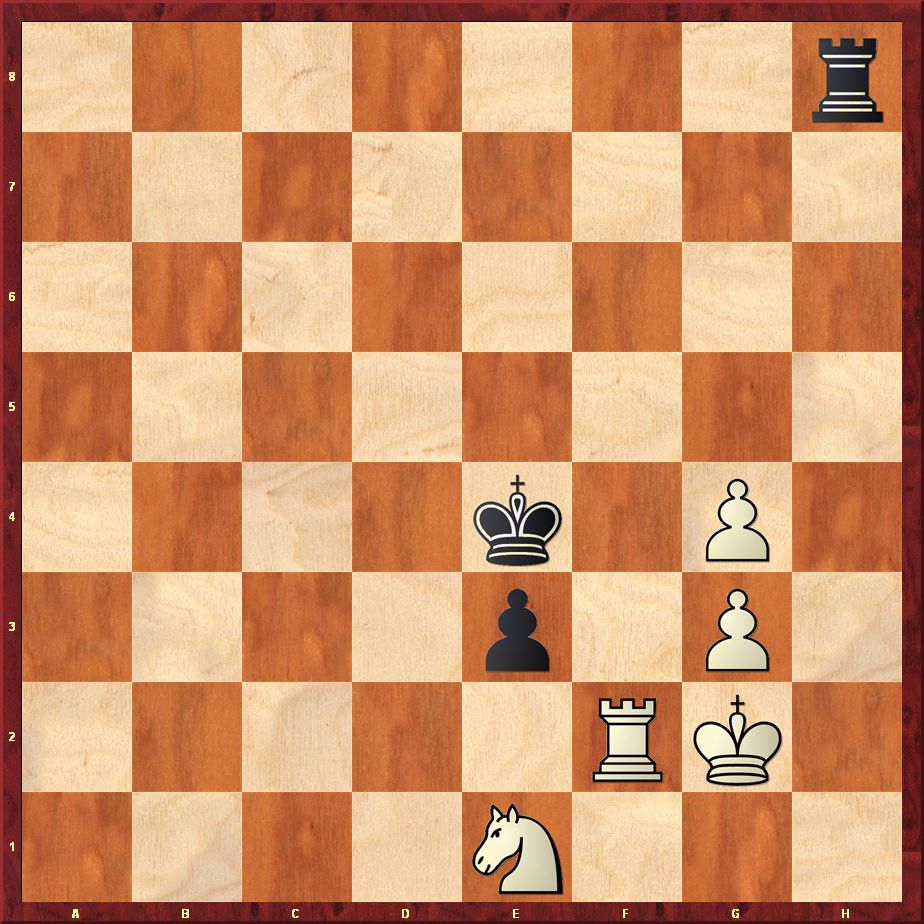
1...Rh2+! and white resigned.
After 2.Kxh2 exf2 and the pawn queens because black has two squares to promote it.
Polgar admits: "I was labeled as a tricky player early on and have been regarded as tricky throughout my whole career. It was said that I was able to pull out tricks from nowhere."
The late world champion Vassily Smyslov nicknamed her "Tal in a skirt." She enjoys being compared to the brilliant world champion Misha Tal.
Throughout his career, Tal created many great combinations and there are not enough books about his skills. The latest is The Magic of Tactics of Mikhail Tal by Karsten Muller and Raymund Stolze, published by New In Chess. It is the English version of the German book we liked in our review.
But Tal also made many unsound sacrifices. And somehow when nobody would bet a dime on his position, he turned it around with a wonderful trick.
Tal - Tringov
Munich Chess Olympiad 1958

Black is a pawn up and can easily cover the dark squares in his position. But as it happens in many Tal's games, black blunders a piece away.
16...Bd7??
Falling for a little trick. After 16...Qe5 17.Kg1 Bd7 white has no compensation for a pawn.
17.Qxd7+!
Winning a piece. Game over.
17...Kxd7 18.Nc5+ Ke7 19.Nxe4 f5 20.Nc5 Black resigned.
This fragment brings another element: tricks are often possible only with the opponent's help.
I had my own experience in three games against Drazen Marovic, the Croatian grandmaster and editor of the Yugoslavian chess monthly Sahovski Glasnik. It began during our student years.
"You only play for tricks," Marovic told me at the Student Olympiad in Krakow in 1964. And the Yugoslav master had his reasons. Our game finished with a queen sacrifice I had predicted before the game in a conversation with our coach, Frantisek Pithart. I was lucky because I would not have able to do it without Marovic's help.
Kavalek - Marovic
Krakow 1964
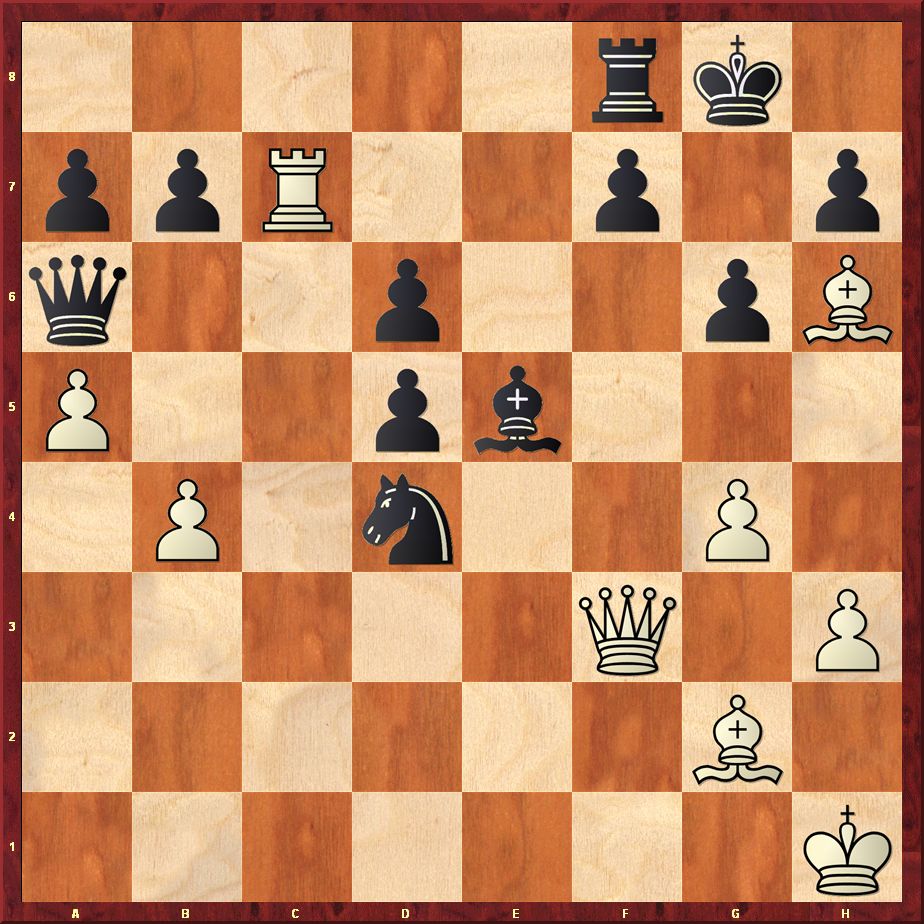
Black had a draw at hand: after 34...Ne2-g3+ the position would have been repeated three times. But Marovic lived under the illusion that he is better, played 34...Ne2-d4 and allowed the promised queen sacrifice.
35.Qxf7+!! Black resigned.
He is mated after 35...Rxf7 36.Rc8+ Rf8 37.Rxf8 mate.
At the Student Olympiad in Marianske Lazne in 1962 I played Marovic for the first time and he remembered the encounter as well. Throughout the competition I was in a creative mood. For example, I have conceived my signature game against Eduard Gufeld, winning the brilliancy prize. The game with Marovic was another tactical adventure. At that time Marovic selected the wrong path and the punches began to fall.
Kavalek - Marovic
Marianske Lazne 1962

23.Rd1!?
Faced with a loss of pawn, I forced Marovic to make a choice and he made the wrong one.
23...Qxc6?
The game turns now by 180 degrees. Black should have taken the other pawn in front of the white king: 23...Qxg3. Marovic was obviously afraid of 24.Nxe4, but he should have calculated further 24...fxe4 and now:
A. 25.Bxf6 Nf4 26.Rxf4 Qxf4 27.Bc3 Bg4 28.Qc4+ Rf7 and black wins
B. 25.Rxf6 Rxf6 26.Bxf6 Nf4 27.Rd8+ [After 27.Qxe4? Nh3+ 28.Kh1 Nf2+ wins.] 27...Kf7 28.Qd2 Nge6 29.Rh8 Kxf6 30.Qb2+ Kf7 and black wins.
24.Nxe4!
The knight sacrifice brings the game into full swing with diagonal attacks, pins and other tactical devices.
Caissa, the chess goddess, is just, fair and merciful to her subjects and what she takes away, she often gives back. I am sure that the sacrifice on e4 was fixed in Marovic's mind and that it reapeared during his game against Tigran Petrosian in Amsterdam in 1973:
Marovic - Petrosian
Amsterdam 1973
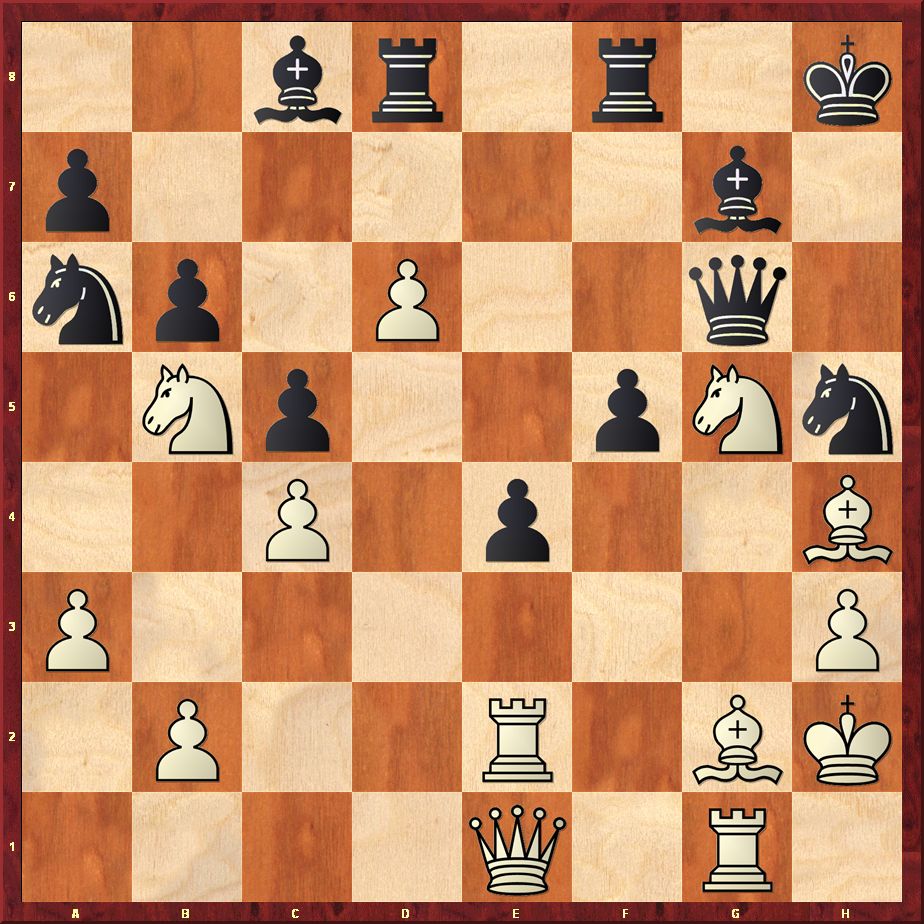
33.Nxe4! fxe4 34.Bxe4 Qe6 35.Re3+- Rde8 36.Be7 Rf5 37.Bxf5 Qxf5 38.Rg5! Qf7 39.Qh4! Kg8 40.Rxh5 Bxh3 41.Kxh3 Petrosian resigned. Marovic was compensated.
The knight sacrifice on e4 became part of a scholarly discussion on the memomics of chess: Steven Dowd's reply to de Sousa's article
24...fxe4
Other moves are weaker:
A. 24...Qb6+ 25.Nf2 Ba6 26.Bd5+ Kh7 27.Qf3 Bxb2 28.Qh1+ Nh5 29.Qxh5+ Kg7 30.Bxa8 Bxf1 31.Rd7+ Rf7 [31...Kf6 32.g4!] 32.Rxf7+ Kxf7 33.Qxf5+ Kg7 34.Kxf1 wins.;
B. 24...Bxb2 25.Nf2 Qc3 26.Bd5+ Kh7 [Or 26...Ne6 27.Bxe6+ Kg7 28.Rd3±] 27.Ne4!! Mixing offense and defense. 27...fxe4 28.Qh2+ Nh5 29.Qxh5+ Kg7 30.Rxf8 Qxg3+ 31.Ng2 Nxf8 32.Rf1 wins.
25.Rxf6!
An additional sacrifice is necessary to control the dark squares.
25...Rxf6 26.Bxe4 Re6?!
Marovic defends with a pin, but he would be better off to use it differently: 26...Qb6+!? 27.Bd4 Qe6!, for example 28.Bxf6 Bb7 29.Bxg7 Bxe4 [29...Qxe4?! 30.Qxe4 Bxe4 31.Rd7±] 30.Bd4 Re8 and black is still in the game.
27.Rd8+ Ne8
Other moves lose:
A. 27...Kh7 28.Qh5+!! Nxh5 29.Rh8 mates. Everything is possible when the pieces achieve harmony.
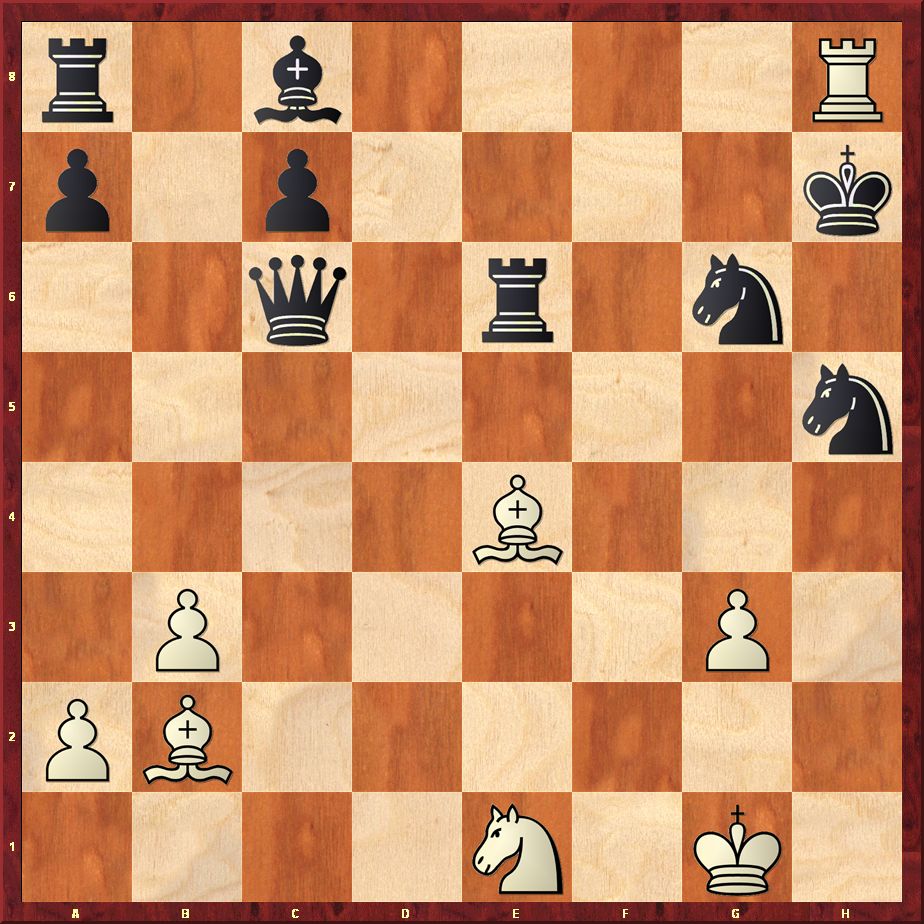
B. 27...Kf7 28.Qf2+ Rf6 29.Nf3 Qb6 [29...Qxe4 30.Ng5+ Ke7 31.Bxf6 mate.] 30.Bd4 the picturesque lineup of white's bishop pair decides, for example 30...c5 31.Ng5+ Ke7 32.Bxc5+ and white has a choice of which cherry to pick: 32...Kxd8 33.Qd4+ Bd7 34.Bxb6+ Rxb6 35.Qxg7 Rc8 36.Bxg6 wins.
C. 27...Nf8 28.Rxf8+ Kxf8 29.Qf3+ white wins.
28.Bxc6 Rxe2 29.Bxa8
The storm is over, but it is not yet quiet.
29...Ba6
After 29...Rxe1+ 30.Kf2 Rb1 31.Rxe8+ Kf7 32.Re2 white is a pawn up and the bishop pair gives him a clear upper hand.
30.Bc3 Kf7?
Walking into an ambush, but white is clearly better after 30...Kh7 31.Bf3 Re7 32.Rd5!
31.Bf3! Rxa2?
Allowing a decisive attack, but after 31...Re3 32.Bd2 Re5 33.Ra8 white wins the second pawn.
32.Rd7+! Kf8
Going up runs into a pretty mate: 32...Ke6 33.Bg4 mate.
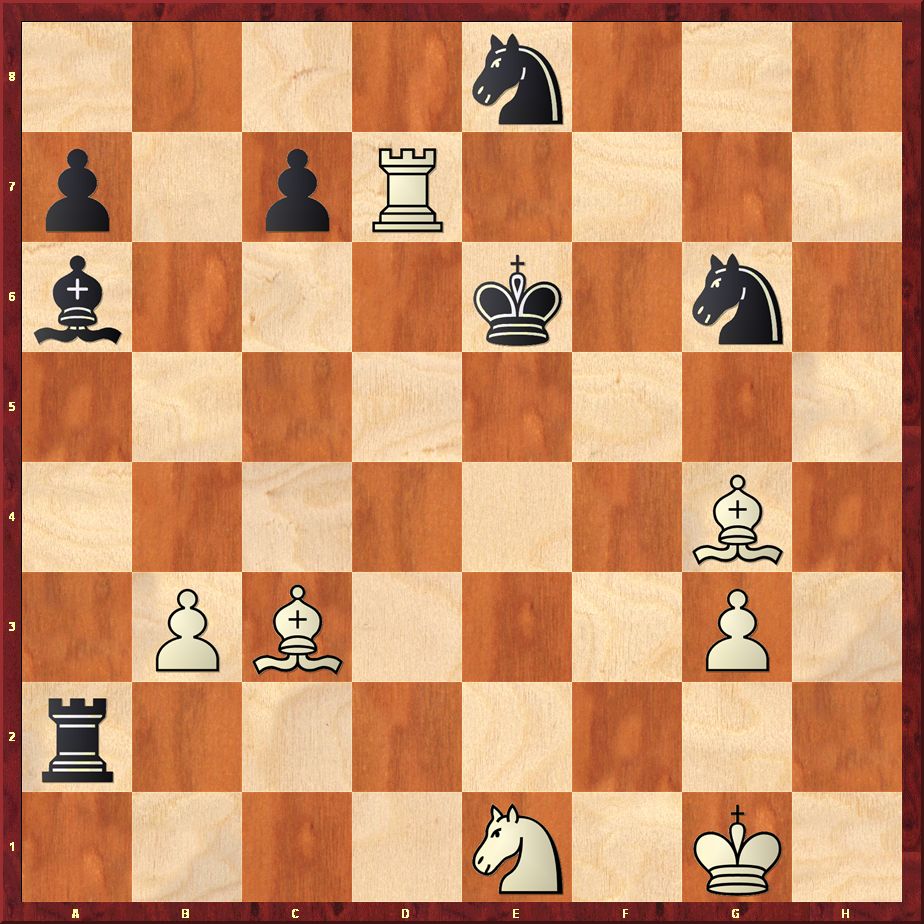
White wins beautifully after 32...Ne7 33.Bh5+ Kf8 34.Bg7+!!
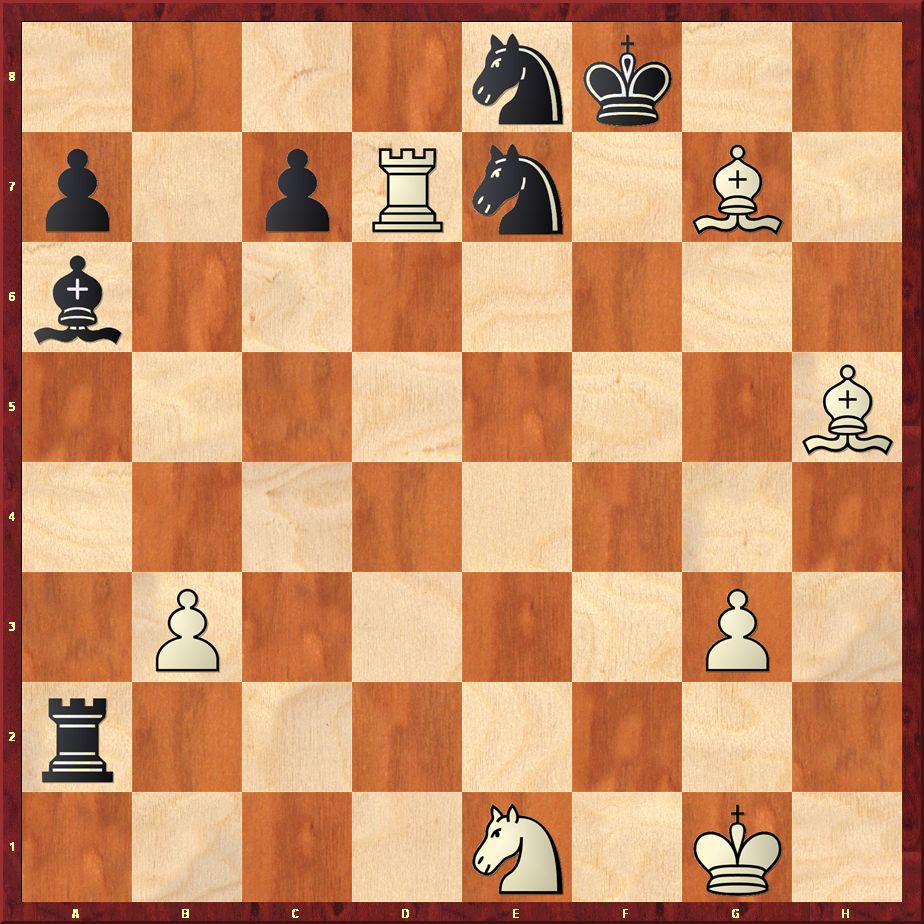
acquiring both knights:
34...Nxg7 35.Rd8+ Ne8 36.Rxe8+ Kg7 37.Rxe7+; or 34...Kxg7 35.Rxe7+ Kh6 36.Bxe8.
33.Bb4+ Kg8
After 33...Nd6 34.Rxc7 wins.
34.Bd5+ Black resigned.
He is getting mated after 34...Kh8 35.Bc3+.
In 1968, we played in the IBM tournament in Amsterdam. The outcome was important since I was able to finish first ahead of the legendary grandmaster David Bronstein. My victory in the game against Marovic came out of nowhere. He resigned in a position in which I had plenty of threats and we both thought it was not premature. We both missed that Marovic could have saved the game with a stunning trick.
Kavalek - Marovic
Amsterdam 1968
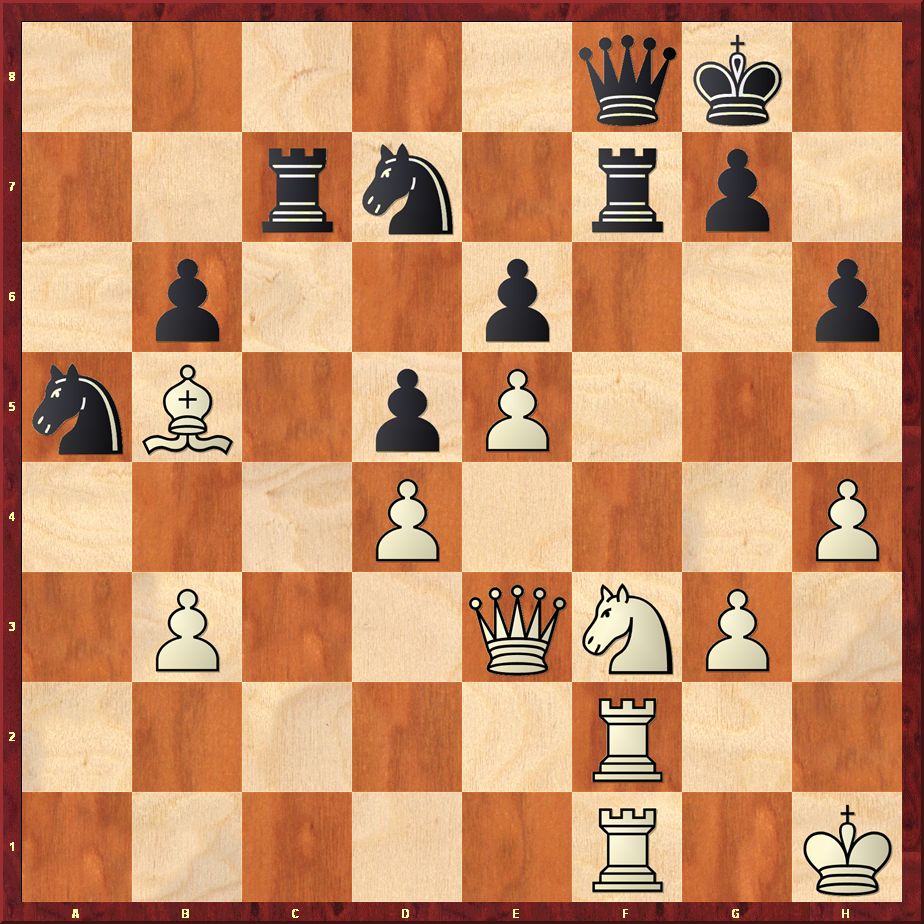
I have just played 32.Ref1, trying to build up the kingside attack and Marovic decided to force the play.
32...Qb4!?
It is too late to bring other pieces for the defense: 32...Nb7 33.Bd3 Qb4 34.Bg6 Rf8 35.Ng5! hxg5 36.Bf7+ Rxf7 37.Rxf7 Nd8 38.Rxg7+ Kxg7 39.Qxg5+ wins.;
And after the passive 32...Qe7 33.Bd3 Nf8 white can roll the g-pawn 34.g4.
33.Ng5!
Marovic confessed he underestimated the strength of the trick.
33...Rxf2 34.Qxf2
To my surprise, Marovic resigned. He must have seen the ghosts from the past.
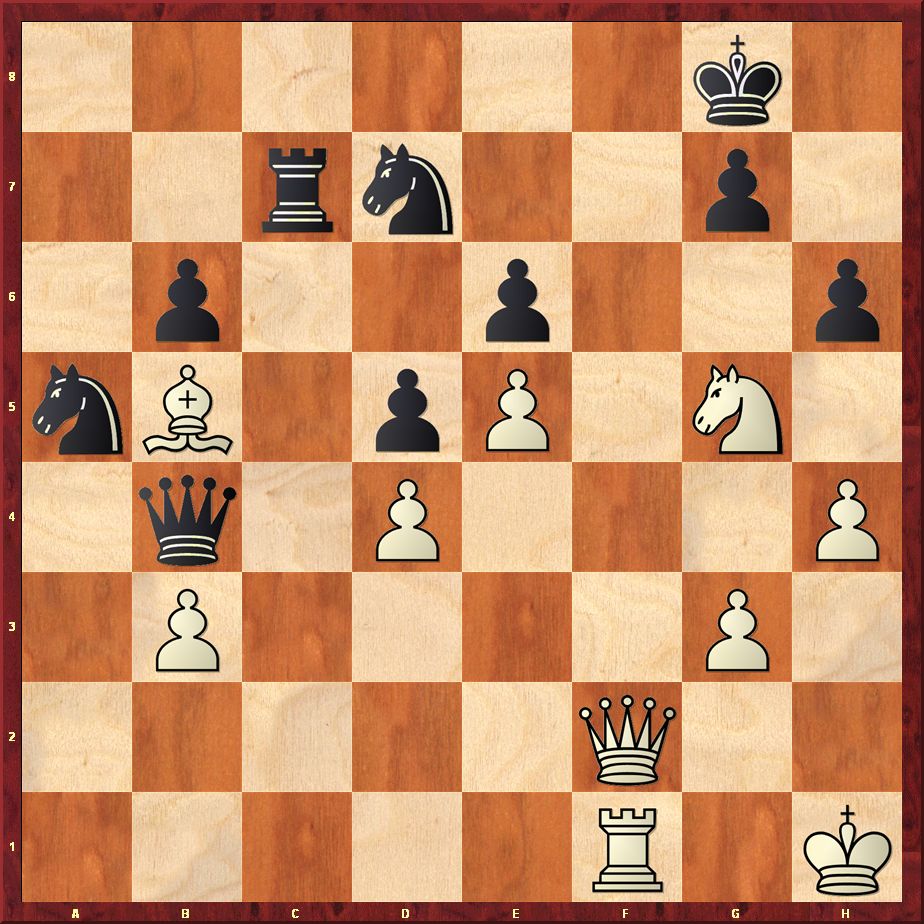
White has two pieces hanging and neither can be taken. Moreover, white threatens 35.Nxe6 and 35.Qf7+ and mate. But there was a way out neither of us had seen.
34...Nxe5!
An unexpected resource, defending the square f7.
Other moves lose:
A. 34...hxg5 35.Qf7+ Kh8 36.Qe8+ Kh7 37.Bd3+;
B. 34...Qxb5 35.Qf7+ Kh8 36.Qf8+ Nxf8 37.Rxf8 mate;
C. 34...Nf8 is refuted by a forking combination: 35.Qxf8+ Qxf8 36.Rxf8+ Kxf8 37.Nxe6+ winning a piece;
D. 34...Qe7 35.Nf7 Rc8 (After 35...Nxb3 the white pieces have a funny way to sneak in: 36.Nd6 Nf8 37.Be8 Na5 38.Qf4 Nc4 39.Bf7+ Kh7 40.Ne8 Ra7 41.Nxg7! and white wins.) 36.Nd6 Rf8 37.Qc2 Rxf1+ 38.Bxf1 the knight on a5 is hopelessly out of play.
35.dxe5
35.Nxe6 is met by 35...Rf7.
35...hxg5 36.Qxb6
After 36.Bd3 gxh4 37.Qf3 hxg3 38.Qh5 g2+! 39.Kxg2 Qd2+ 40.Rf2 Qxd3 white has to take the draw with 41.Qe8+.
36...Qe4+ 37.Kg1 Rc3!
But not 37...Rc2 38.Qxe6+ Kh7 [Or 38...Kh8 39.Qe8+ Kh7 40.Qh5+ Kg8 41.Rf8+! Kxf8 42.Qe8 mate.] 39.Qf5+ Qxf5 40.Rxf5 and white should win. The e-pawn is too dangerous.
38.Qd8+ Kh7 39.Qxg5 Qe3+ 40.Qxe3 Rxe3 41.b4 Nc4 with equal chances.
Note that in the replay windows below you can click either on the arrows under the diagram or on the notation to follow the game.
"Dutch Treat" by Hans Ree returns
American chess book publisher Russell Enterprises, Inc. (REI) is proud to announce that Dutch grandmaster Hans Ree, one of the great chess writers of our time, will resume his popular column "Dutch Treat." The online column attracted an extensive worldwide following for almost 14 years but has not been seen for about two years. Ree's column will be available to everyone at the REI website beginning on Saturday, December 1.
To celebrate the return of Ree's online column, Russell Enterprises will be hosting a Holiday Quiz that is certain to challenge as well as delight fans around the world. Some nice prizes, including a selection of Russell Enterprises books, DGT clocks and a subscription to New In Chess, will be awarded to the winners.
Russell Enterprises is one of the most active and respected publishers of chess books in the world, with a wide selection of books in both traditional and electronic formats. Ree's first chess book to be released in English, The Human Comedy of Chess, was published by REI over a decade ago. His next book, My Chess, is scheduled to be released by REI in September 2013.
